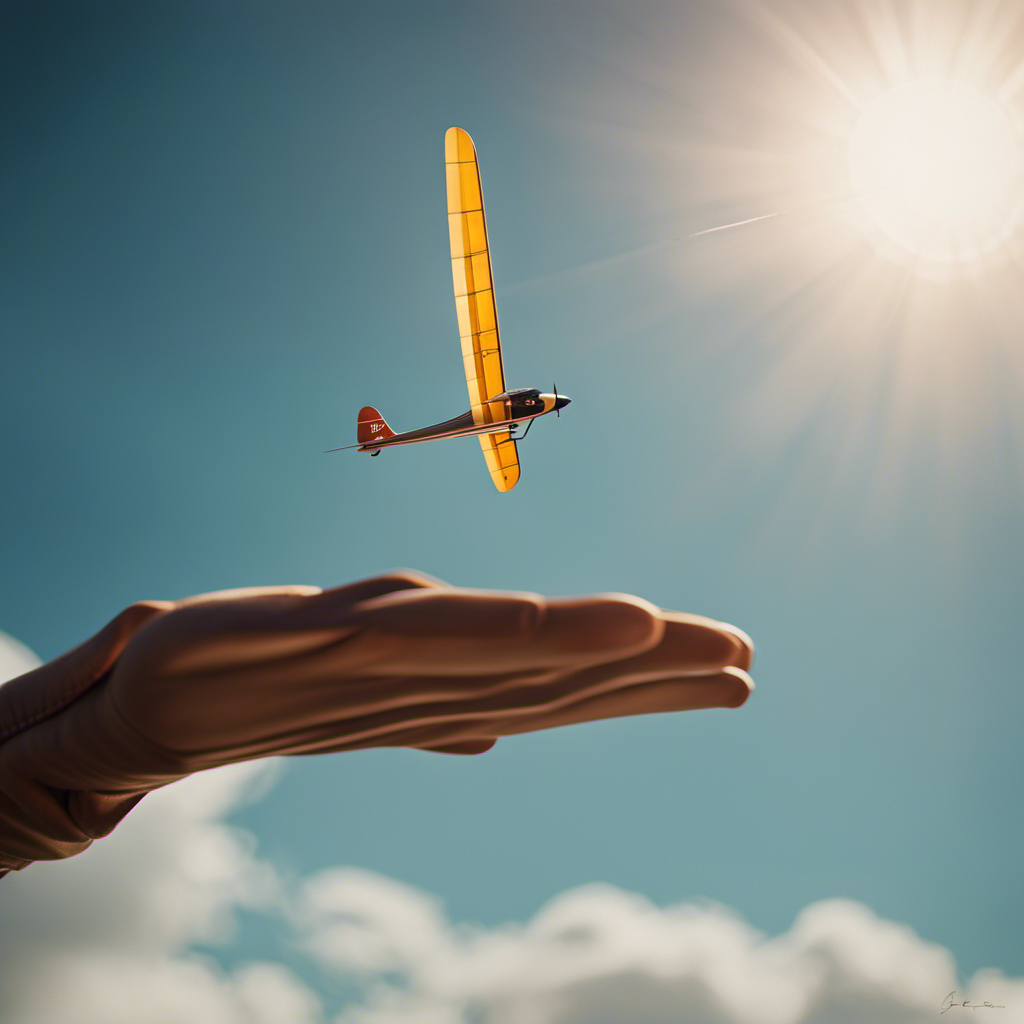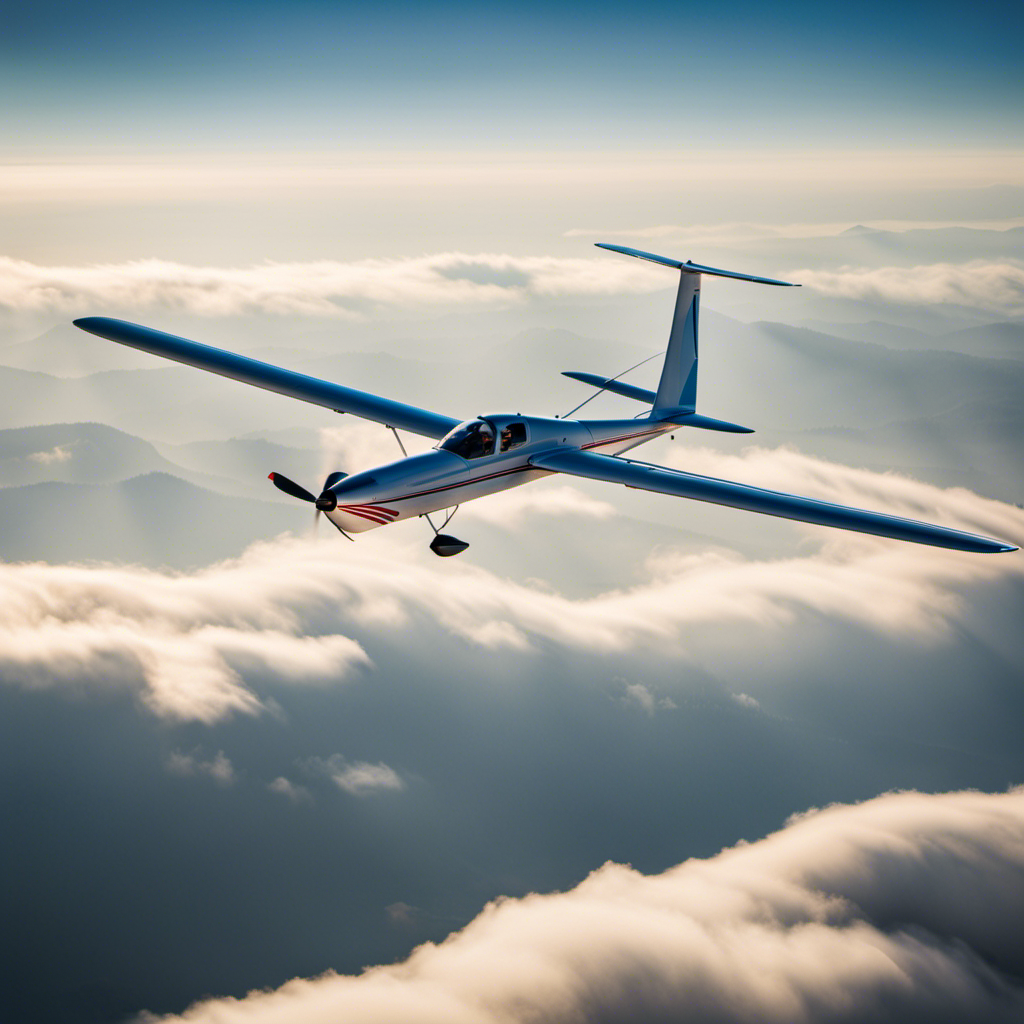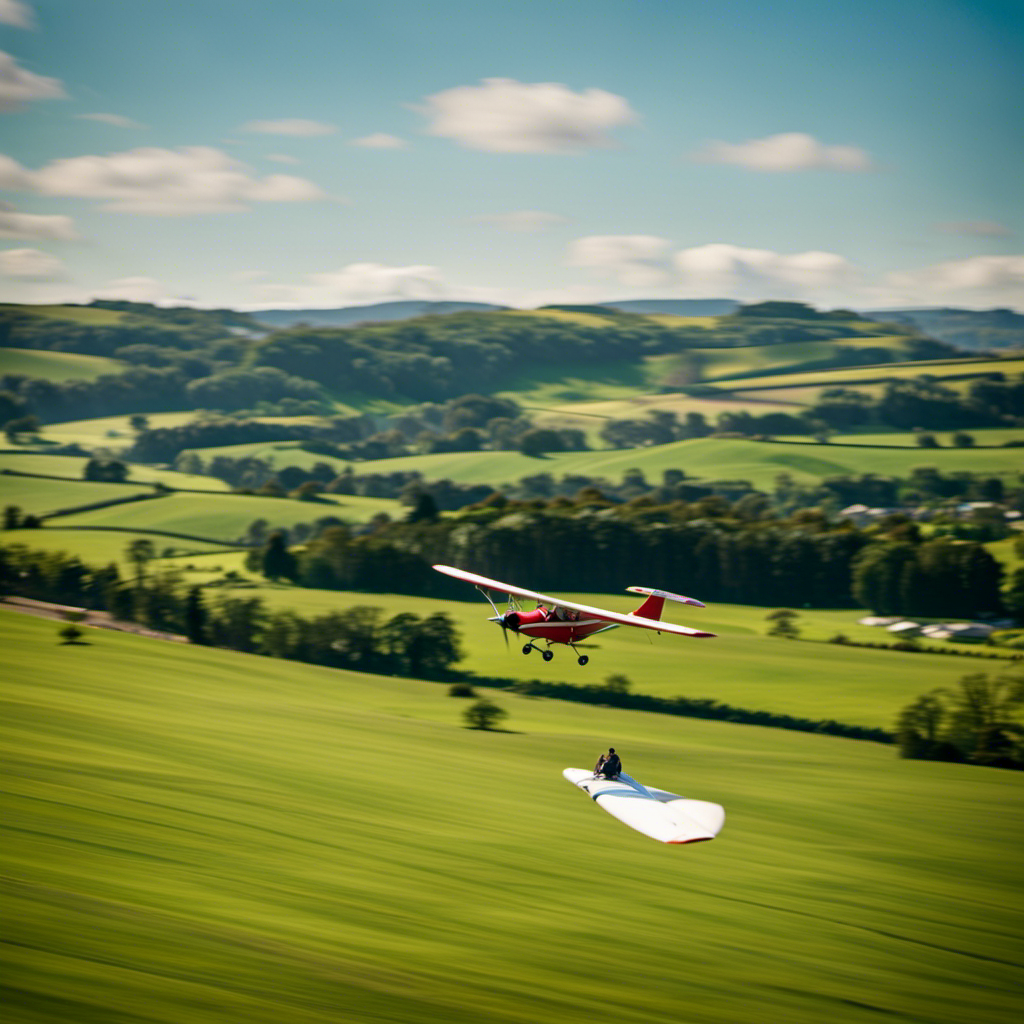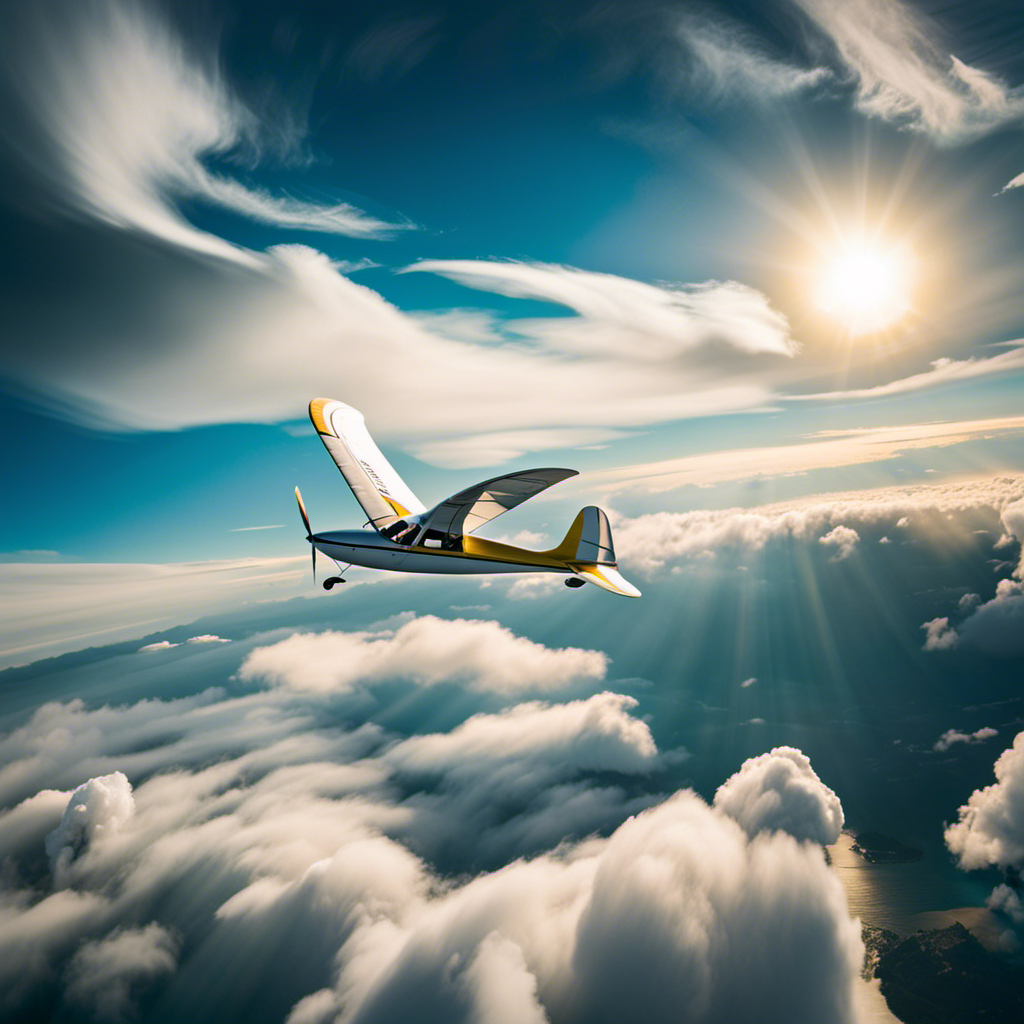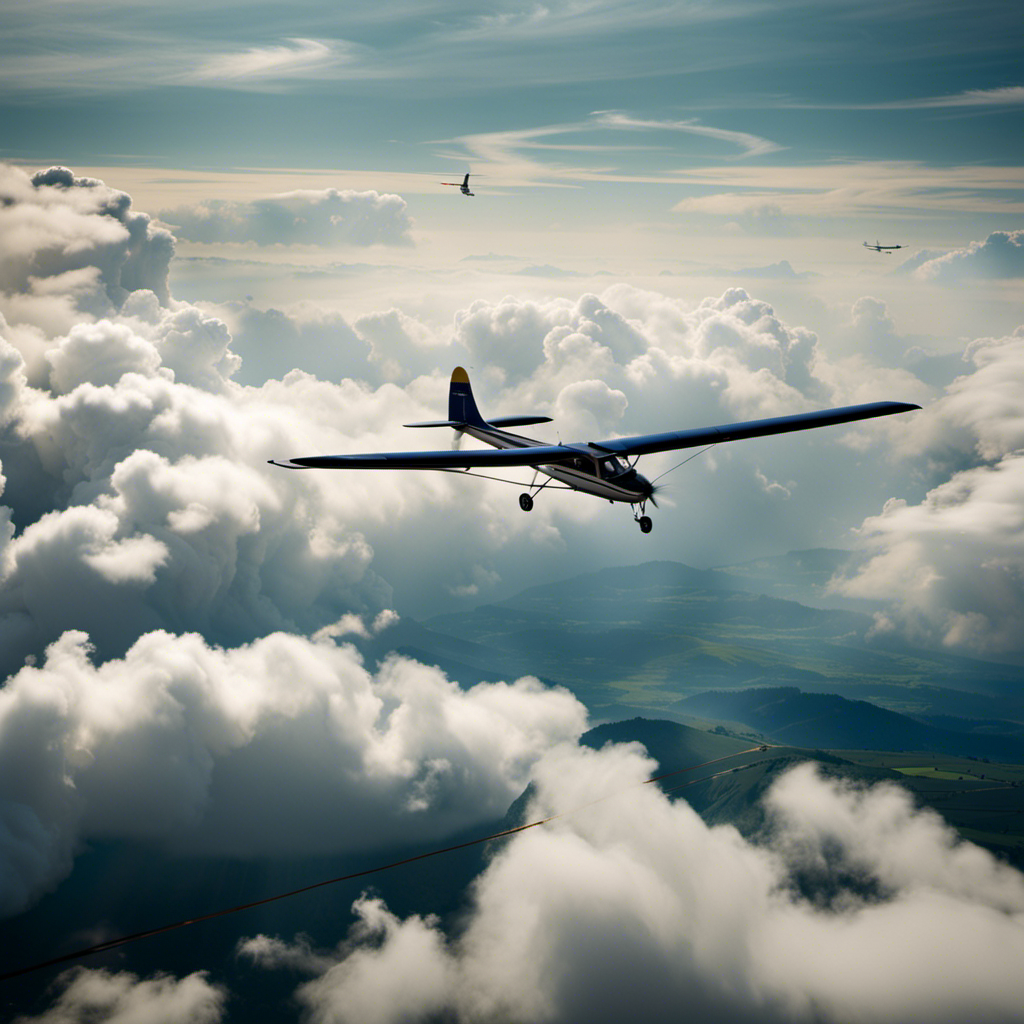Releasing an elastic launch glider into the air is like setting a bird free in the expansive skies. With the right skills and preparation, you can enjoy the excitement of watching your glider soar and glide with ease.
In this article, I will guide you through the steps to achieve the best launch possible. From understanding the basics to mastering the launch technique, we will explore the key elements that will help you achieve high-flying success.
Get ready to take flight and unleash the potential of your elastic launch glider.
Key Takeaways
- Experiment with different launch angles to find the optimal performance.
- Analyze launch data to determine the impact of launch angle on glider performance.
- Adjust launch parameters based on findings to improve glider’s performance.
- Prioritize safety precautions for a smooth and secure flight.
Understand the Basics of Elastic Launch Gliders
To understand the basics of elastic launch gliders, it’s important to know how the rubber band provides the necessary propulsion. The rubber band is an essential component of the glider’s construction. It is stretched and wound tightly, storing potential energy. When released, this energy is transferred to the glider, propelling it forward.
The rubber band acts as a source of potential energy, which is converted into kinetic energy during flight. Understanding aerodynamics is also crucial in designing a successful elastic launch glider. The shape and weight distribution of the glider affect its flight performance. By manipulating these factors, we can optimize the glider’s lift, drag, and stability.
Now that we have a basic understanding of elastic launch gliders and aerodynamics, let’s move on to choosing the right glider design.
Choose the Right Glider Design
When picking out a glider design, you’ll want to make sure it suits your needs and preferences. Glider stability and wing design play a crucial role in how well the glider performs during flight.
Here are some key factors to consider:
-
Wing Shape: Different wing shapes offer varying levels of stability. Choose a design that provides the right balance between lift and stability for your intended flight path.
-
Wing Span: The length of the wings affects the glider’s maneuverability and stability. Longer wings generally offer better stability, while shorter wings provide greater maneuverability.
-
Wing Placement: The position of the wings on the glider affects its stability. Opt for a design where the wings are placed closer to the center of gravity for improved stability.
By carefully considering these factors, you can select a glider design that meets your specific requirements.
Now, let’s move on to preparing your glider for launch.
Prepare Your Glider for Launch
First, make sure you’ve thoroughly inspected your glider for any signs of damage or wear before preparing it for launch. Glider maintenance is crucial for a safe and successful flight. Check the wings for cracks, dents, or loose parts, and ensure the control surfaces are properly aligned.
Inspect the fuselage for structural issues and make sure all connections are secure. Don’t forget to check the rubber bands or elastics used for launching and replace them if they show signs of wear.
Launch safety precautions are essential to minimize risks. Always wear appropriate safety gear like goggles and gloves. Ensure the launch area is clear of obstacles and people.
Lastly, find a suitable launch site that provides enough space and favorable wind conditions for a successful flight.
Now, let’s move on to finding a suitable launch site.
Find a Suitable Launch Site
Now that you’ve inspected your glider, it’s important to locate an appropriate site for a successful flight. Launch site selection plays a crucial role in the overall safety and performance of your elastic launch glider. When choosing a launch site, consider factors such as wind direction, obstructions, and open space. Ensure that there are no trees, buildings, or power lines nearby that could interfere with your launch. It’s also important to prioritize launch site safety, so choose a location away from people or busy areas. To help you visualize the ideal launch site, here is a table that illustrates the key characteristics:
| Criteria | Ideal Conditions |
|---|---|
| Wind Direction | Directly into the wind |
| Obstructions | Clear of trees and buildings |
| Open Space | Wide and unobstructed area |
Master the Launch Technique
To ensure a successful flight, it’s essential to become proficient in the launch technique. Perfecting your timing and improving your technique are key to maximizing the performance of your elastic launch glider.
When launching, start by holding the glider firmly with one hand at the center of gravity. With a quick, smooth motion, release the glider while simultaneously pulling back on the elastic band. This will provide the necessary tension for a powerful launch.
It’s crucial to time the release and the pullback of the elastic band just right to achieve optimal trajectory and distance. By practicing and adjusting your launch technique, you can fine-tune the movement and increase the efficiency of your glider’s flight.
Now, let’s move on to adjusting the elastic band tension, which plays a crucial role in optimizing the launch.
Adjust the Elastic Band Tension
When adjusting the tension of the elastic band, make sure to find the balance that allows for optimal glider performance. The tension of the elastic band plays a crucial role in determining how far and how smoothly your elastic launch glider will fly. Here are some key points to keep in mind when adjusting the elastic tension:
- Start by launching the glider with a moderate tension and observe its flight path.
- If the glider consistently nosedives or stalls, increase the tension gradually.
- If the glider flies too high and loses stability, decrease the tension slightly.
- Experiment with different tensions to find the sweet spot that maximizes distance and stability.
- Fine-tune the tension based on how the glider performs during test flights.
By adjusting the elastic tension, you can optimize the launch technique and improve the overall performance of your glider.
With this foundation, you can now move on to practicing and fine-tuning your launches to achieve even better results.
Practice and Fine-tune Your Launches
Keep in mind that practicing and fine-tuning your launches is essential for improving your overall performance. To achieve consistent and successful launches, it is important to develop effective practice techniques and troubleshoot any issues that may arise.
Start by focusing on your throwing technique, ensuring a smooth and controlled motion. Pay attention to your grip and release, making adjustments as needed. Experiment with different arm angles and speeds to find the most efficient launch method.
Additionally, observe the flight of your glider and make note of any deviations or inconsistencies. This will help you identify any potential issues and allow you to make the necessary adjustments.
By practicing regularly and refining your launches, you will build the skills needed for a successful flight.
Transitioning to the next section, let’s discuss how to experiment with different launch angles.
Experiment with Different Launch Angles
Experimenting with different launch angles can help you achieve optimal performance and maximize the flight distance of your glider. By adjusting the angle at which you release your glider, you can control its trajectory and improve its overall flight characteristics. To illustrate the impact of launch angles on glider performance, consider the following table:
| Launch Angle (degrees) | Flight Distance (meters) | Average Flight Time (seconds) |
|---|---|---|
| 10 | 20 | 5 |
| 20 | 30 | 6 |
| 30 | 40 | 7 |
| 40 | 35 | 5.5 |
From this table, we can see that as the launch angle increases, both the flight distance and average flight time tend to increase. However, there is a point of diminishing returns, as evidenced by the drop in flight distance at a launch angle of 40 degrees. Therefore, it is crucial to experiment with different launch angles to find the optimal angle that yields the best performance for your glider. By analyzing and learning from your launches, you can fine-tune your technique and further improve your glider’s performance.
Analyze and Learn from Your Launches
Analyzing and learning from your launches can provide valuable insights into how to improve the performance of your glider. To improve launch efficiency, it is important to carefully analyze launch data and make adjustments based on the findings.
Here are some key steps to consider:
- Record launch parameters such as launch angle, force applied, and duration of launch.
- Compare the recorded data to previous launches to identify patterns or trends.
- Analyze the glider’s trajectory during the launch phase to pinpoint any areas of inefficiency.
- Experiment with different launch techniques, such as adjusting the force applied or the release angle, to optimize launch performance.
- Continuously monitor and analyze launch data to track improvements and make further adjustments as needed.
By analyzing launch data and making informed adjustments, you can significantly improve the efficiency of your glider’s launches and increase its overall performance.
With this knowledge, you can now transition into the subsequent section and enjoy the thrill of high-flying success.
Enjoy the Thrill of High-Flying Success
After analyzing and learning from my previous launches, I am now ready to enjoy the thrill of high-flying success with my elastic launch glider.
As I prepare for takeoff, I can’t help but feel a surge of excitement. The thought of soaring through the sky and witnessing the grace of my glider is exhilarating.
However, it is crucial to prioritize safety precautions to ensure a smooth and secure flight. Before launching, I carefully inspect the glider for any damages or loose parts.
I also ensure that the launch area is clear of obstacles and bystanders. Additionally, I double-check the elasticity of the launch band and verify that it is securely attached to the glider.
Frequently Asked Questions
What are the different types of elastic launch gliders available in the market?
There are several types of elastic launch gliders available in the market. They can be made from different materials like foam, balsa wood, or carbon fiber. Each material has its pros and cons, affecting the glider’s performance and durability.
How do weather conditions affect the performance of an elastic launch glider?
The wind is a powerful force that can either lift or push down an elastic launch glider, while temperature affects the density of air, thus influencing the glider’s lift and overall performance.
Can I use a regular rubber band instead of an elastic band for launching the glider?
No, a regular rubber band cannot be used as an alternative launch method for an elastic launch glider. The use of an elastic band is necessary due to its specific properties that provide the necessary force and control for a successful launch.
How can I prevent the elastic band from getting tangled during the launch?
To prevent tangles during launch, ensure the elastic band is securely attached to the glider and launch mechanism. Adjust the launch angle to minimize any twisting or entanglement. These steps will ensure a smooth and successful launch.
Are there any safety precautions I should take while launching an elastic launch glider?
When launching an elastic launch glider, it is important to take certain precautions for safety. Proper launching technique includes checking for obstacles, ensuring a clear launch path, and using protective gear if necessary.
Conclusion
In conclusion, launching an elastic glider is like embarking on a journey of discovery. Just as the glider soars through the sky, we too can reach new heights by mastering the intricacies of this fascinating hobby.
Like a soaring bird, the glider represents our aspirations and the limitless possibilities that lie before us. By following the steps outlined in this guide, we can unlock the secrets of a successful launch and experience the exhilaration of seeing our glider take flight.
So, let us spread our wings and embrace the excitement of high-flying success!
With a heart that soars as high as the skies, Aria, affectionately known as “Skylark,” is the driving force behind Soaring Skyways. Her journey into the gliding world began as a young dreamer gazing up at the soaring birds, yearning to experience the weightlessness and freedom they embodied. With years of experience both in the cockpit and behind the scenes, Aria’s commitment to the gliding community is unwavering.
